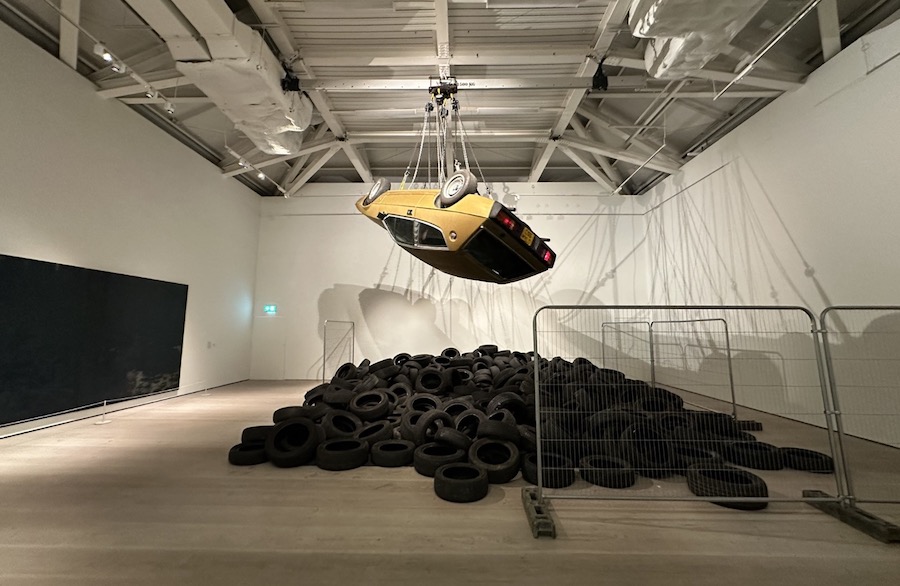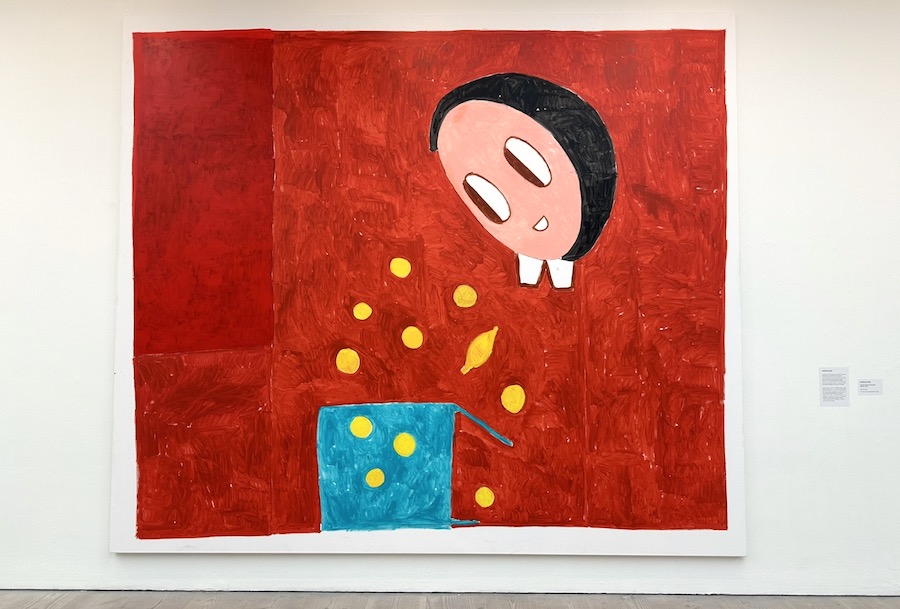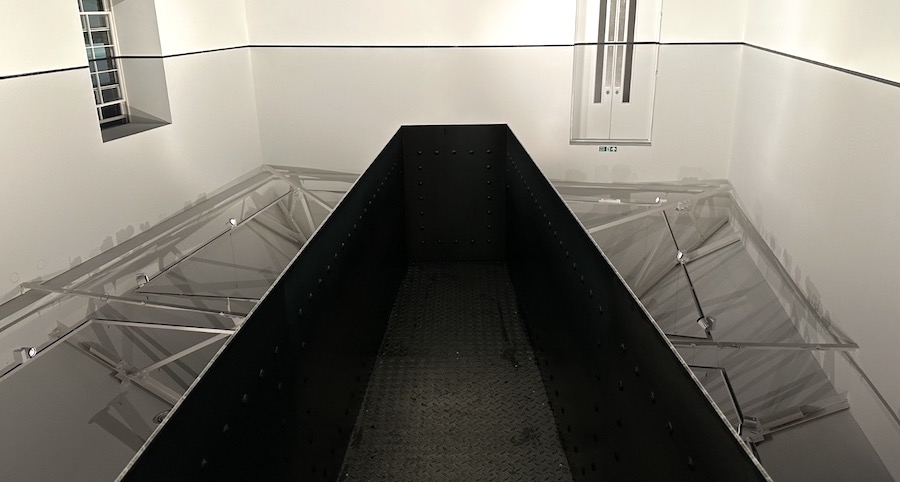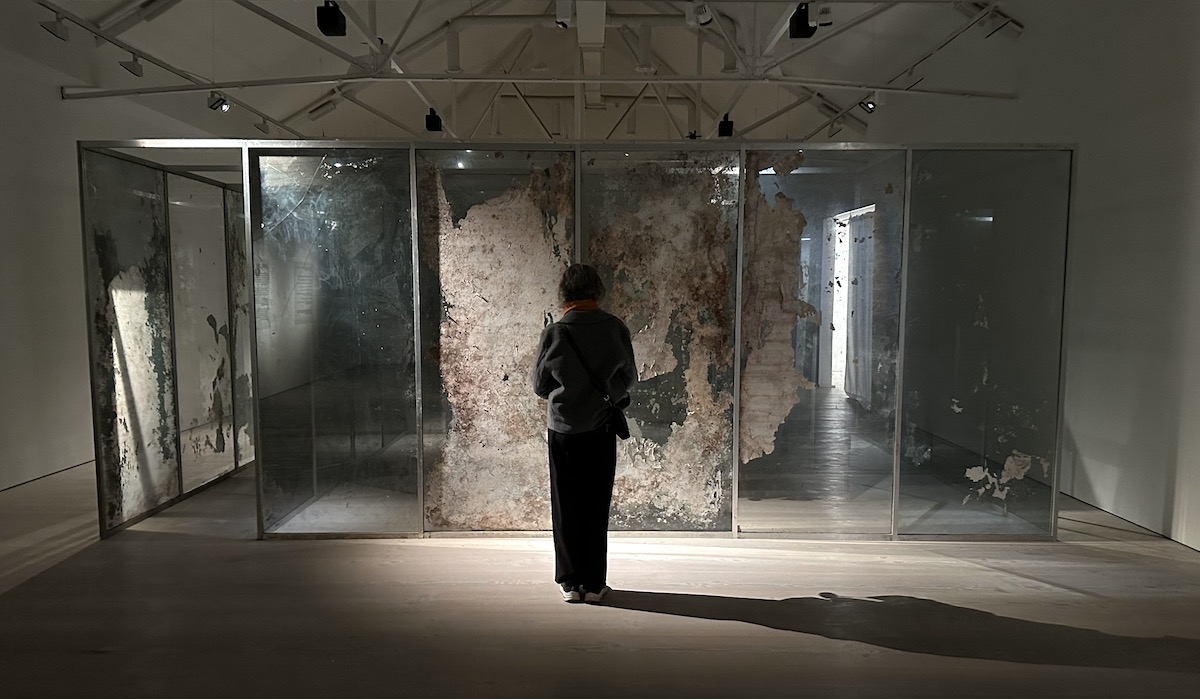The Long Now, Saatchi Gallery: In quantum physics, the “now” or “present moment” is described as the locus of indefinite possibilities that have collapsed into concrete reality through interaction or observation. Because I am here, writing this, and you are here, reading it, this article exists. Unlike the classical view of time, which delineates the history of art, the intricate entanglement of quantum mechanics suggests that until experienced, everything exists in a superposition of all possible states. Could an exhibition then, represent exactly that kind of situation? Do artworks only become part of our concrete reality – our culture – through audience interaction and observation?
That was certainly my question as I entered the Saatchi Gallery to meet the former director Phillipa Adams, who has returned to this once (still?) iconic space – that championed so many art stars – to curate “The Long Now”. Celebrating four decades of contemporary art, this ambitious group show features artists closely associated with the gallery’s dynamic history, alongside fresh voices from a new generation. Quantum in nature – enfolding past and present works into the exact moment.
The exhibition title was inspired by Brian Eno, who coined the phrase and established the foundation https://longnow.org in the belief that “Civilisations with longer nows look after things better”. Challenging today’s throwaway culture with long-term thinking is an excellent curatorial lens for an exhibition that looks back to past exhibitions. “The Long Now” is a show that restores us to works that shaped our present moment, whilst asking what we can do to preserve them, and why that matters.
We meet in the middle of the building, on a glass-enclosed bridge that leads to a viewing platform of the gallery below. There, Petroc Sesti is speaking to art handlers about the base of his totemic sculpture, currently still wrapped. Adams and Sesti walk around the piece, ‘HELIOPHORE 1’ from his ‘Anatomy of Light’ series, deciding its final position. “Over the past two decades, I’ve been investigating how light can be shaped and refracted through form. This geometric column is made from an optical polymer that expands the scale of prisms and will send shards of light everywhere.”

Beyond this, I see the shadow of a car streaking across the white walls of the gallery below. Crossing the bridge onto the viewing platform, I find Conrad Shawcross’s Golden Lotus (Inverted), a vintage Lotus Elite (1981) suspended upside down on chains, spinning in slow rotation to an original soundtrack by MYLO. A beautiful carcass, stripped of its 2.2L, 16-valve, 4-cylinder engine, this was first presented at the Saatchi Gallery for Sweet Harmony: Rave Today (2019), Adam’s last blockbuster exhibition. The work now hangs above a pile of used car tyres – a participatory, interactive work by Allan Kaprow entitled YARD. Looking down at the vehicle and wondering who will venture into that rubber mountain to play under a spinning car, I experience a strange mixture of appreciation (for the hardware in this juxtaposition of works) and quite rage about our present moment, so obsessed with software, which accelerates what we consume and how much we throw away. I recall Eno’s words, “our highest hope is that the next generations will never doubt that we thought of them and built for them.”
Repeatedly on our walk through this exhibition, spanning two floors and nine major exhibition spaces, I feel this tension between provocation and engagement. “It’s not one exhibition but multiple exhibitions,” says Adams, “each room is curated to a specific theme, with artworks sited in conversation or solo exhibitions that speak to a certain aspect of ‘The Long Now’.” We are now in the first room, on the theme of ‘Mark Making’, standing in front of a luminous painting by Rannva Kunoy ‘ATH/ATL x1’ (2024). The work is made with car paint, a structural form of colour that mimics a butterfly’s wings and changes hue as you move around it. At the end of the room is a strange floating aperture, framed by what looks like peat from a bog. It is, in fact, wool stuffed into long nylon tubes by London-based multidisciplinary artist Carolina Mazzolari. Unlike her other works, distinctive for their sculptural silver-stitch technique, it seems I am looking at a new form of eco insulation, “well maybe, that could be one way of seeing this” says Adams, with her cheeky, infectious smile. You can tell she’s really enjoyed coming back and filling up these rooms again.
Walking into the next room, her joy seems to expand. “I just love this piece by Jo Dennis, who created this new armature for it.” To me, the work appears emblematic; it embodies the post-structuralist aesthetic synonymous with BritArt, and specifically with Saatchi, yet it was made recently. Nothing is shocking about a stitched body of painted canvas draped over a metal structure, but it is beautiful. My appreciation grows when I see a work by Olivia Bax, a genuinely contemporary sculptor. Then I am shocked. At the end of the next room is a gargantuan portrait by Jenny Saville, Passage (2004), a work that powerfully embodies her vision to “be a painter of modern life, and modern bodies”, says Adams. For Saville, the body is not a battleground. Still, a social construct, and her paintings – always visceral, with her subjects unflinching in their nakedness – highlight how social, medical, and cultural forces shape our physical lives.

However, the work in that room that really gets me into the now (from the way it felt then) is ‘Frau am Tisch mit Früchten – Matisse’ (2024) in acrylic on canvas by Andre Butzer. Playful and irreverent, it ignites something in me, something I haven’t felt in a while, given the current socio-political climate. Whilst we must not ignore the very real problems we face as a society, maybe a bit of creative action – art for art’s sake – can present alternative perspectives and inspire new ways forward.
Moving through a lyrical landscape room, we step into the dystopian future of Chino Moya’s ‘Deemona’ (2025) and Mat Collishaw’s Aftermaths (2025), which together ask “how humans retain reflection and emotion in a technologically mediated world”. The answer, it seems, is given by the artist Chris Levine at the end of the sequence, with his immersive, meditative piece ‘LOVE / NOW’ like a balm for the much-disturbed soul. Before we get there, we need to make our way through the central thesis of the show: BARDO (2025). Now a dilapidated maze of partial mirrors, this work by Gavin Turk was once named ‘The Golden Thread’ (2004), transforming a structured space into fractured pathways of glass. However, the work was then stored and forgotten about – left to rot on the edges of our collective consciousness and no longer part of our long now. Bringing it back to life, using the Tibetan concept of Bardo (a transitional state between death and rebirth) the installation includes a shifting soundscape that guides and misleads visitors. Adams comments, “It is both a celebration and a provocation, a reminder that art has always been a mirror of its time but also anticipates and interprets the future.”

Stepping out of this, we are treated to some light art by Olafur Eliasson, Frankie Boyle and Chris Levine’s immersive escape room. In the next room, I see giant ants all over the back wall, redolent of Louise Bourgeois. The space feels very contemporaneous, with echoes from the last Venice Biennale, full of fibre art but also complete of tender sadness about the current political climate. Not once, in all the years I visited the Saatchi gallery, did I imagine this present, collapsing, precarious moment. Gently moving in the centre of the room is a wave of glass amulets by Palestinian, London-based artist Dima Srouji. All this leads us into the final room, past two exquisite miniatures by Soheila Sokhanvari in crude oil on Canford paper, constructed especially for this show featuring Richard Wilson’s seminal installation, 20:50. Originally sited in the basement (1987), and considered a defining piece of British contemporary art, we now find it on top floor in a dramatic and disorienting new setting. With slick black oil filled to the very brim, everyone who steps into that room will get their fingers dirty – and they do.
On our way back down, we find Sesti has taken the protective wrapping off his sculpture. Brilliant, translucent and reflective, like a frozen column of light, it seems that time has stopped and compressed this moment. As I move around it, I see Adams on the other side compressed into a little geode. Always here, always now. – Nico Kos Earle -November 2025
Top Photo: Gavin Turk
The Long Now runs from November 5, 2025, to March 1, 2026. Tickets £10.

